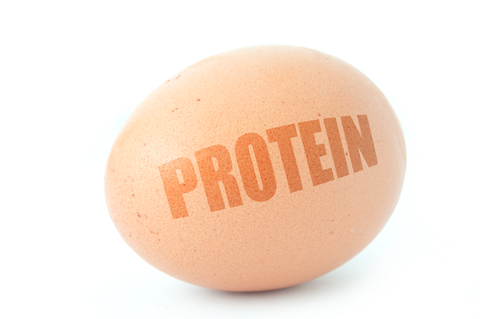Easy Ways You Can Add More Protein To Your Diet
You know that eating well requires you to include veggies, whole grains, and fruits into your diet, but do you get enough protein? Typically, protein is found in foods such as eggs, meat, chicken, fish, and beans — but not all of us are getting enough of it. Not to get all scientific, but our bodies naturally produce non-essential amino acids (amino acids are the building blocks of protein), but they aren’t enough to maintain the body daily. As a result, we need essential amino acids found in protein-based foods to fulfill that quota. Protein is an essential component of a balanced diet. Consuming an adequate amount of protein will lead to faster recovery, more energy, and better performance. Lean meats are the most popular source of protein we think of, but the same old chicken or fish dinners can get boring. Try these tips to mix things up and sneak more protein into your diet!
- Stir an egg white (or two) into your oatmeal: With almost 7 grams of protein per ¼ cup, egg whites are one the best complete protein sources (meaning they contain all nine essential amino acids). Not only will adding them to your oatmeal sneak in some more protein, it will also add more volume, making your breakfast a bit more satisfying.
- Replace pasta with quinoa or amaranth: These seeds are often classified and cooked like grains. With 8-9 grams of protein per cooked cup, these pseudo-grains are amazing plant-based sources of protein. Use them in place of pasta in any recipe, or eat them as a hot breakfast cereal with your favorite toppings in place of oatmeal!
- Replace sour cream with Greek-style yogurt: Using a plain, unsweetened Greek yogurt in place of that dollop of sour cream on your baked potato can add 5-8 grams of complete protein to your plate.
- Get creative with cottage cheese: low-fat or fat-free cottage cheese packs in 28 grams of complete protein per cup! Make a sweet treat by stirring in a little stevia and topping it with fruit, scoop it onto your salad for a creamy dressing, or substitute it for half of your milk in your favorite pancake recipe.
- Snack on nuts: Almonds top the charts with 6 grams of protein per ounce, but cashews take a close second with 5 grams of per ounce. If you want to get creative, blend them into a smoothie, toss them on your salad, or bake with nut flour!
- Toss in some seeds: Per ounce, chia seeds have 4 grams of protein, sunflower seeds contain 5 grams, and hemp seeds take the lead with 10 grams! Toss these superfoods into your salad, smoothies, or yogurt.
- Use powdered peanut protein: With 10 grams of protein in just ¼ cup, powdered peanuts are the best way to get your peanut butter fix. Mix it with water or your favorite nut milk to make a peanut butter substitute, sprinkle it on your oatmeal or yogurt, add it to your smoothies, or bake with it!
- Bake with protein powder: Find your favorite protein powder and get creative with it. Mix it into to your oatmeal, coffee creamer, or use it to make protein pancakes!
- Substitute with avocado: Instead of butter or oil, use avocado! Spread it on toast to keep things simple, or use it in place of oil in recipes. To use in any recipe, replace half the oil or butter with pureed avocado. Half an avocado has about 2-3 grams of protein and a fourth of the fat and calories of butter.
- Replace rice with nutrient-dense grains: Spelt contains 11 grams of protein per cup, kamut and teff contain 10 grams per cup, and sorghum contains 9 grams per cup. In other words, these grains contain double the amount of protein as white or brown rice! Cook them in a rice cooker or on the stove top, just as you would rice!
- Add spirulina to your smoothies: This natural “algae” is one of the most potent protein sources available with 16 grams per ounce! Not to mention it’s a great source of antioxidants, B-vitamins, iron, calcium, and other nutrients. Add it to your fruit smoothies or protein shakes.
- Season with nutritional yeast: One ounce of this flakey seasoning contains a whopping 14 grams of protein! Nutritional yeast has a cheesy flavor and can be used to season anything from scrambled eggs, salad, or pesto. It’s also an amazing source of B vitamins, doubling as a perfect vegan alternative for cheese.
- Add legumes to your favorite recipes: Throw a handful of green peas (8 grams of protein per cup) or edamame (12 grams per cup) into a soup or salad for a fresh flavor.
- Or bake with legumes instead: Use chickpeas, which have 12 grams of protein per cup. Or use black beans, which have 15 grams of protein per cup.
I hope these tips help you to get more protein into your diet.
Request a complimentary first session at Vertex Fitness, Voted the BEST Personal Training Studio on the Main Line
Click HERE and we will schedule a session to try it yourself








Leave a Comment